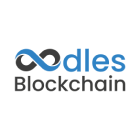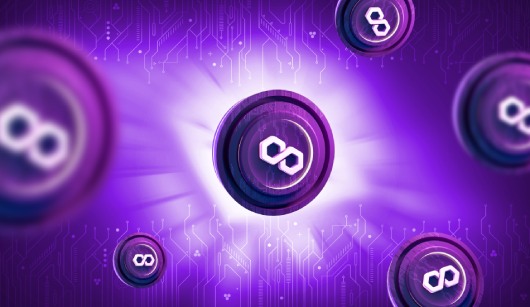How Polygon AggLayer Emerges to be the Hub for Ethereum L2s
 Mohd Arslan Siddiqui
Mohd Arslan Siddiqui
Blockchain technology has rapidly evolved in recent years, enabling decentralized finance (DeFi), non-fungible tokens (NFTs), and many other applications. However, one of the persistent challenges facing blockchain networks is scalability. Scalability becomes critical for preserving network performance and user experience as adoption rises and transaction volumes rise. In response to this challenge, the AggLayer has emerged as a groundbreaking paradigm shift within the Polygon Blockchain Development Network, promising to revolutionize blockchain scalability.
About the AggLayer Integration
AggLayer’s innovation’s core is its seamless integration with layer 1 blockchains like Ethereum. By leveraging the security and consensus mechanisms of layer 1 chains, the AggLayer ensures that transactions processed through its framework maintain the same level of trust and immutability as those on the underlying layer 1 chain. Through this integration, interoperability with current blockchain ecosystems is made possible and security is strengthened.
A key feature of the AggLayer is its ability to aggregate multiple transactions into a single batch. This aggregation mechanism significantly reduces computational overhead and transaction costs, making transactions faster and more cost-effective for users. By batching transactions, the AggLayer optimizes resource utilization and improves overall network efficiency, a crucial aspect in achieving scalability.
Advantages of the AggLayer
The AggLayer offers several advantages that make it a compelling solution for blockchain scalability:
Scalability
By processing transactions in batches and optimizing resource utilization, the AggLayer addresses the scalability bottleneck, significantly increasing throughput and reducing latency.
Cost Efficiency
Aggregated transactions lead to lower gas fees, making blockchain interactions more affordable for users and developers. This cost efficiency is crucial for widespread adoption and accessibility.
Security Built on top of layer 1 blockchains, the AggLayer inherits robust security features, ensuring a secure environment for decentralized applications. This security is essential for maintaining trust and protecting user assets.
Interoperability
The AggLayer is designed for interoperability with existing layer 1 chains and layer 2 solutions, fostering a seamless and connected blockchain ecosystem. This interoperability enables seamless asset transfer and enhances overall network utility.
Enhanced Smart Contracts
Smart contracts deployed on the AggLayer often benefit from enhanced scalability and efficiency. The platform supports complex computations and interactions without compromising performance, opening up new possibilities for DeFi protocols, NFT marketplaces, and other blockchain-based applications.Developers may create feature-rich, dependable decentralised apps that grow with demand by utilising scalable smart contracts.
Optimized Routing
The AggLayer employs advanced routing algorithms to distribute transactions efficiently across the network. These algorithms dynamically adjust routing based on network conditions, ensuring optimal performance and scalability even under varying loads. By optimizing transaction routing, the AggLayer minimizes congestion and latency, enhancing the overall user experience for blockchain applications.
Real-World Applications
The scalability and efficiency of the AggLayer unlock a range of possibilities for blockchain-based applications:
DeFi Platforms
The AggLayer enables high-frequency trading, efficient liquidity provision, and complex financial instruments on DeFi platforms. It supports scalable decentralized exchanges, lending protocols, and asset management solutions.
NFT Marketplaces
NFT marketplaces can process many transactions, including minting, trading, and royalties, without congestion or high fees. The expansion of the NFT ecosystem and the ownership of digital assets depend on this scalability.
Gaming and Virtual Worlds
Scalable smart contracts on the AggLayer facilitate real-time interactions, in-game asset management, and secure peer-to-peer transactions within gaming ecosystems. This scalability enhances gameplay experiences and fosters the development of blockchain-based gaming platforms.
Supply Chain and Logistics
Blockchain-based supply chain solutions benefit from faster transaction processing, transparent record-keeping, and automated contract execution. The AggLayer’s scalability enhances supply chain visibility, efficiency, and traceability.
Conclusion
The AggLayer by Polygon represents a significant leap forward in blockchain scalability within the Polygon Network and the broader blockchain ecosystem. Its innovative approach combines layer 1 security with layer 2 scalability techniques, unlocking new possibilities for decentralized applications, financial services, digital assets, and beyond. Solutions like Polygon’s AggLayer are paving the path for a more scalable, effective, and accessible decentralised future as blockchain technology develops.
Feel free to contact our blockchain developers for more information regarding Polygon blockchain development or project discussion.
Subscribe to my newsletter
Read articles from Mohd Arslan Siddiqui directly inside your inbox. Subscribe to the newsletter, and don't miss out.
Written by

Mohd Arslan Siddiqui
Mohd Arslan Siddiqui
Expert blockchain writer with a knack for simplicity. Blends technical depth with engaging storytelling.